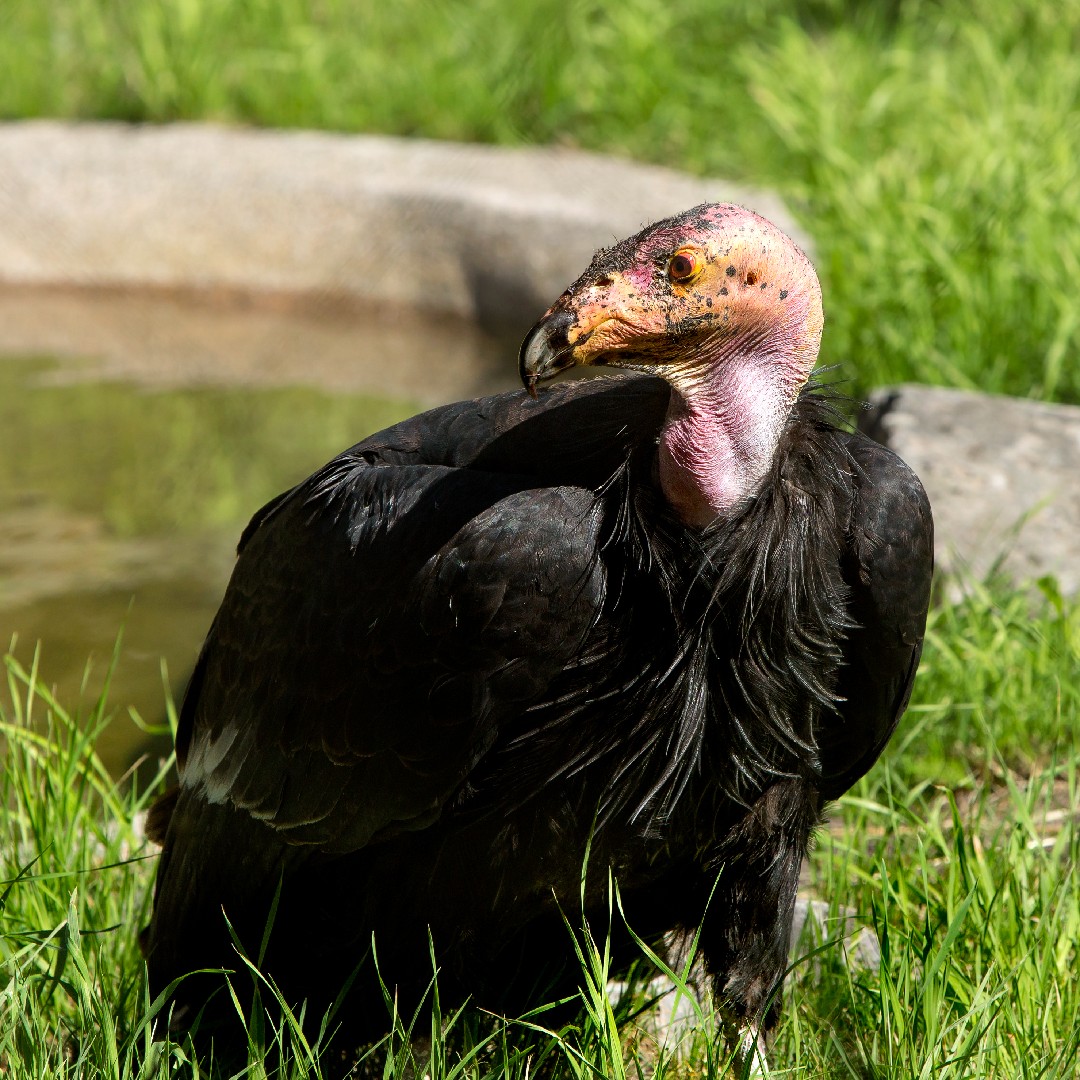California Condor
A species of North American Condors, Also known as California Vulture Scientific name : Gymnogyps californianus Genus : North American Condors
California Condor, A species of North American Condors
Also known as:
California Vulture
Botanical name: Gymnogyps californianus
Genus: North American Condors
Content
Description People often ask General Info
Description
The huge, distinctive california Condor darkens the sky as the largest land bird in North America, with a broad wingspan which ends in long “fingers”. A fully grown california Condor will be black with bright white patches beneath its wings. Its featherless head is bordered by what looks like a fluffy scarf or a feather boa.
Size
1.2 - 1.3 m
Life Expectancy
36.5-40 years
Nest Placement
Cliff
Number of Broods
53 - 60 days
Nestling Period
163 - 180 days
Feeding Habits
California Condor primarily consumes carrion of varying sizes, from deer, cattle, and pigs, to sea lions and whales. They ingest bone chips and shells for calcium. California Condor uses sight, not smell, to find food, opting for smaller bones that are easier to digest. California Condor feeds in groups, avoids human-associated food sources like roadkill, and can intake 5–7% body mass daily, feeding every 2-3 days from a large crop capacity. California Condor rarely eats bird or reptile carcasses.
Habitat
California Condor thrives in mountainous terrains with a mix of open grasslands, wooded areas such as coniferous forests and oak savannas, and rocky shrublands up to 6,000 feet in elevation. These birds select regions with favorable air currents for energy-efficient soaring, requiring large territories for foraging and utilizing cliffs and tall trees for nesting.
Nest Behavior
California Condor lays eggs directly on the ground or on debris piles. Females choose the nest site, and the species may alternate sites. Parental care is shared, with a focus on protecting and incubating the egg.
Nest Characteristics
California Condor typically nests in natural cavities, caves on cliffs, or trees. The nest is about 3 feet across, up to 8 inches deep, with loose boundaries, composed of materials like gravel, leaves, bark, and bones.
Dite type
Scavenger
People often ask
General Info
Feeding Habits
Bird food type
Behavior
During their day, california Condor soar vast distances in search for carrion, demonstrating incredible stamina as they glide across the sky. These birds are sociable, often congregating at communal roosts and even recognizing fellow california Condor. Their interactions are usually peaceful, though dominance can prompt elaborate threats involving posture changes and inflated air sacs. Pairs of california Condor showcase monogamy, sharing nesting duties while remaining together year-round. Courtship is a graceful aerial dance with mutual preening. Offspring rely extensively on their parents post-fledging, influencing breeding patterns. California Condor also maintain hygiene meticulously by bathing and preening, oftentimes assisted by their mates or offspring, and engage in sunning to dry out feathers and warm up. At night, they sleep on high perches, sometimes prone. Predatory threats are scarce but can include Golden Eagles and black bears. Juvenile california Condor indulge in playful behavior, an expression of their youthful exuberance.
Species Status
The California condor conservation project may be one of the most expensive species conservation projects in United States history, costing over $35 million, including $20 million in federal and state funding, since World War II. As of 2007, the annual cost for the condor conservation program was around $2.0 million per year. 
Scientific Classification
Phylum
Chordates Class
Birds Family
New world vulture Genus
North American Condors Species
California Condor 